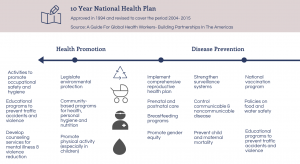In this blog post I will give a bit more context to the Nicaraguan healthcare system. My goal for this week was to better understand the system and so I’ve tasked myself with writing a blog about it!
Nicaragua has had a bumpy history of varying levels of dedication and investment in public health programs. Currently, there is an approximate ratio of 1 doctor for every 2,500 inhabitants and 1 nurse for 909 inhabitants. The Ministry of Health, MINSA, controls all aspects of healthcare delivery and the system of clinics, hospitals, training, research and humanitarian medical aid. Public hospitals and community clinics are managed by a regional entity, called the SILAIS (System of Locally Integrated Health Services) and therefore some autonomy at a local level.
MINSA places a strong emphasis on primary healthcare and provide care for approximately less than one-half of the nation’s population (most people don’t have direct access). 35-40% of Nicaraguans do not have direct access t the public health system. This is largely due to geographical limitations and the effects of poor funding on the infrastructure in place. Doctors have very low wages, there is a lack of basic equipment and supplies, and a shortage of capacity from doctors as most MINSA doctors supplement their earnings by running private clinics from their homes. Regional hospitals from the United Health System provide emergency services and some specialized and surgery services. Any subspecialty care is only ever offered in a tertiary hospital in Managua. All teaching residency programs are similarly located there. There is no triage system to coordinate the care for the high volume of patients seeking care in Managua. There are healthcare options available for government employees through the Nicaraguan Social Security Institute (under the auspice of MINSA), the military health network, and private care. The costs per capita of these last options are approximately twice that of the public sector coverage. 14% of public healthcare costs, mainly those covering rural areas, are provided by NGOs.
